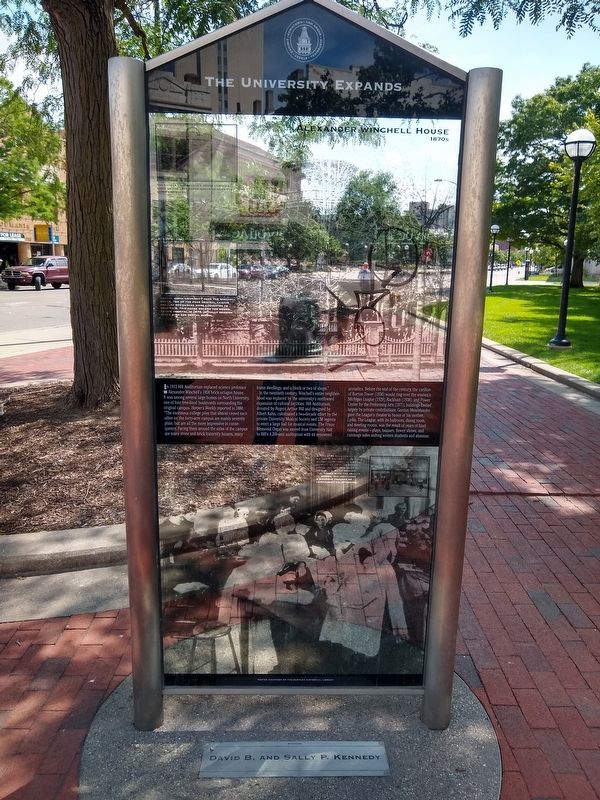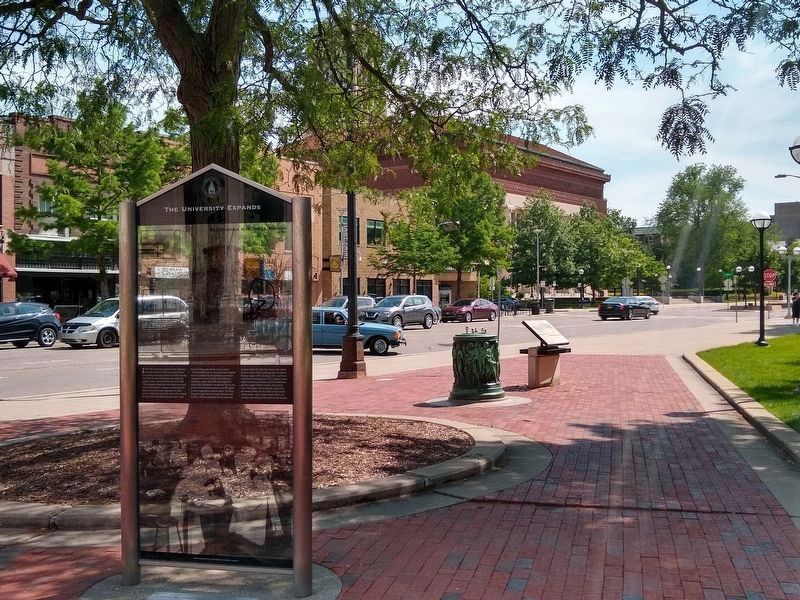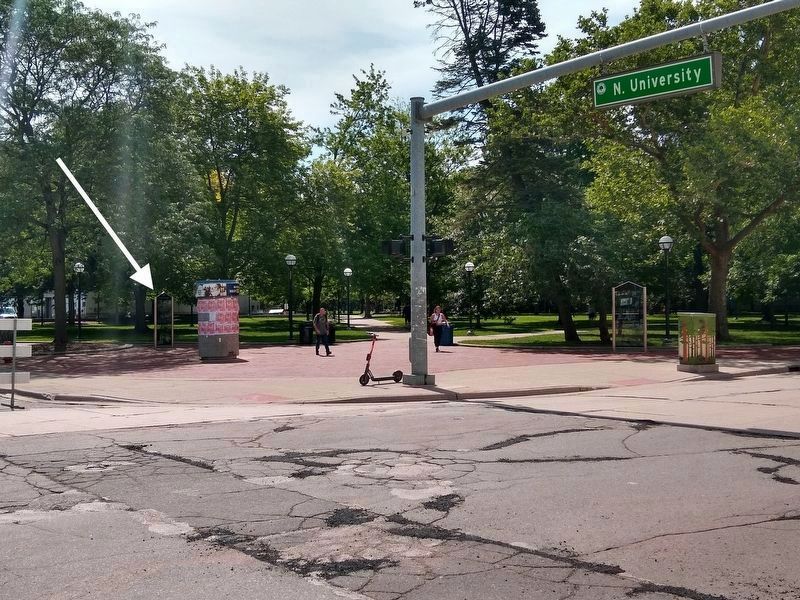Burns Park in Ann Arbor in Washtenaw County, Michigan — The American Midwest (Great Lakes)
The University Expands
In 1913 Hill Auditorium replaced science professor Alexander Winchell's 1858 brick octagon house. It was among several large homes on North University, one of four tree-lined boulevards surrounding the original campus. Harper's Weekly reported in 1880, "The enormous college piles that almost crowd each other on the forty-acre campus are mainly severely plain, but are all the more impressive in consequence. Facing them around the sides of the campus are many stone and brick fraternity houses, many frame dwellings, and a block or two of shops."
In the twentieth century, Winchell's entire neighborhood was replaced by the university's northward expansion of cultural facilities. Hill Auditorium, donated by Regent Arthur Hill and designed by Albert Kahn, culminated a two-decade effort by the private University Musical Society and UM regents to erect a large hall for musical events. The Frieze Memorial Organ was moved from University Hall to Hill's 4,200 seat auditorium with its renowned acoustics. Before the end of the century, the carillon of Burton Tower (1936) would ring over the women's Michigan League (1929), Rackham (1938), and Power Center for the Performing Arts (1971), buildings funded largely by private contributions. Gordon Mendelssohn gave the League's theater in honor of his mother, Lydia. The League, with its ballroom, dining room, and meeting rooms, was the result of years of fundraising events — plays, bazaars, flower shows, and rummage sales uniting women students and alumnae.
David B. and Sally P. Kennedy
Erected by Ann Arbor Historical Foundation.
Topics. This historical marker is listed in these topic lists: Education • Women. A significant historical year for this entry is 1913.
Location. 42° 16.707′ N, 83° 44.426′ W. Marker is in Ann Arbor, Michigan, in Washtenaw County. It is in Burns Park. Marker is at the intersection of South State Street and North University Avenue, on the right when traveling north on South State Street. Touch for map. Marker is in this post office area: Ann Arbor MI 48109, United States of America. Touch for directions.
Other nearby markers. At least 8 other markers are within walking distance of this marker. A Second Shopping District (a few steps from this marker); Hill Auditorium (about 300 feet away, measured in a direct line); Town and Gown: Entertainment and Changing Culture (about 300 feet away); Ideation Building (about 400 feet away); The James Foster House of Art (about 500 feet away); Michigan Theatre (about 500 feet away); Uptown Theaters (about 600 feet away); The University of Michigan Men's Glee Club (about 600 feet away). Touch for a list and map of all markers in Ann Arbor.
Also see . . .
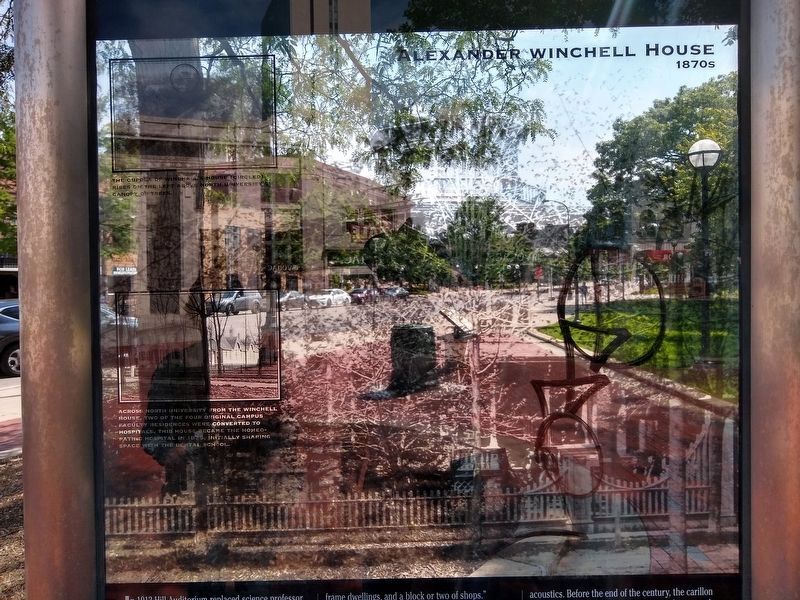
Photos courtesy of the Bentley Historical Library
2. The University Expands Marker — top images
Top image: Alexander Winchell House, 1870s
Top left inset: The cupola of Winchell's house (circled) rises on the left above North University's canopy of trees.
Bottom left inset: Across North University from the Winchell house, two of the four original campus faculty residences were converted to hospitals. This house became the Homeopathic Hospital in 1875, initially sharing space with the dental school.
Top left inset: The cupola of Winchell's house (circled) rises on the left above North University's canopy of trees.
Bottom left inset: Across North University from the Winchell house, two of the four original campus faculty residences were converted to hospitals. This house became the Homeopathic Hospital in 1875, initially sharing space with the dental school.
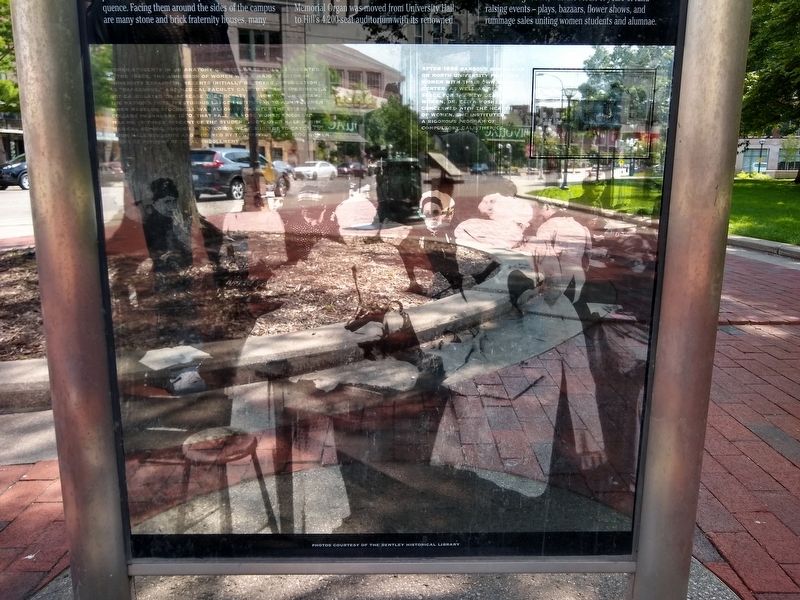
Photos courtesy of the Bentley Historical Library, July 10, 2021
3. The University Expands Marker — bottom images
Bottom image: Women students in UM anatomy classes were still segregated in the 1880s. The admission of women was a major factor in university expansion. Regents initially rejected coeducation as "dangerous," and medical faculty called it "an experiment...not calculated to increase the modesty of women." UM became the nation's most prestigious large institution to admit women when Madelon Stockwell was allowed to enter the literary college in January 1870. That fall 33 more women enrolled, making up three percent of the student body, over half in the Medical School. Though early coeds were subject to catcalls from male students and shunned by townspeople, by 1900 women were 22 percent of total enrollment.
Top right inset: After 1896 Barbour Gymnasium of North University provided women with their own activity center, as well as offered space for the new Dean of Women, Dr. Eliza Mosher. Concerned with the health of women, she instituted a rigorous program of compulsory calisthenics.
Top right inset: After 1896 Barbour Gymnasium of North University provided women with their own activity center, as well as offered space for the new Dean of Women, Dr. Eliza Mosher. Concerned with the health of women, she instituted a rigorous program of compulsory calisthenics.
Credits. This page was last revised on February 12, 2023. It was originally submitted on July 26, 2021, by Joel Seewald of Madison Heights, Michigan. This page has been viewed 111 times since then and 9 times this year. Photos: 1, 2, 3, 4, 5. submitted on July 26, 2021, by Joel Seewald of Madison Heights, Michigan.
